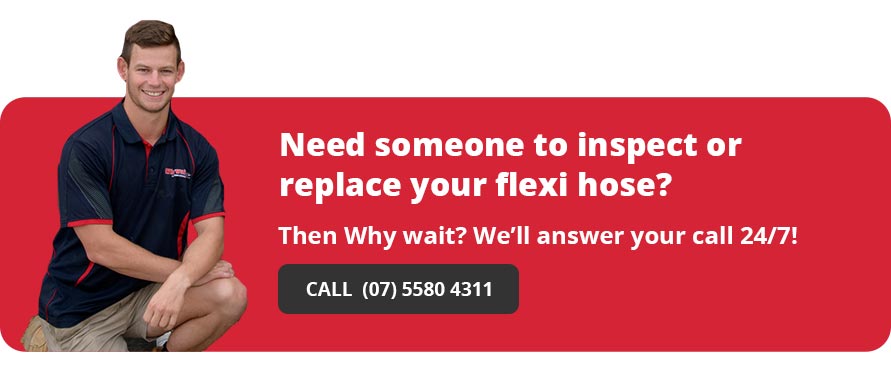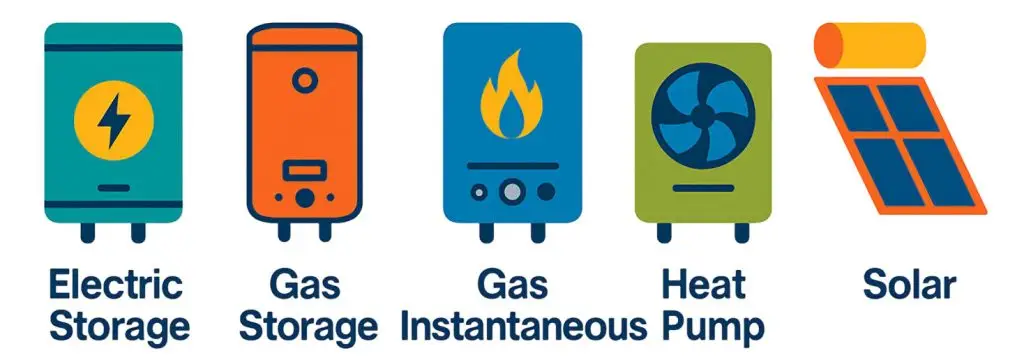
by Gary Mays | Jul 1, 2025 | Hot Water

by Gary Mays | Feb 16, 2025 | Hot Water

by Gary Mays | Jun 29, 2020 | City of Gold Coast, Consumer Issues, Emergency Plumber, Gold Coast Plumbing, Hot Water, Hot Water Heat Pump, Hot Water Legionella, Hot Water Solar, Hot Water Temperature, licensed plumber, Plumbers Gold Coast, Plumbing Emergencies, Plumbing Maintenance, QBCC, Queensland Government, solar hot water
Why do I not have hot water?
May, June and July are the coldest months on the Gold Coast, and no-one wants to start the day with a cold shower in winter. Unluckily for some clients of Whywait Plumbing who are not Service Partners it is in these months they go to the shower and question why do I not have hot water?
Unfortunately, hot water systems are a case of out of sight out of mind. Continually where hot water systems are concerned, there were warning signs that there was a problem. Over the summer months, hot water problems are overlooked as the demand for higher temperature; hot water is not a critical consideration.
Several warning bulletins in Queensland have been issued by the QBCC and Queensland Health advising homeowners that their hot water systems need to be maintained and serviced frequently.
AS/NZS 3500.4:2018 Heated Water Services
The Australian standard that all hot water installation is based around is AS/NZS 3500.4:2018 Heated water services that are an integral part of the National Construction Code of Australia issued by the Australian Building Codes Board and it is all legal requirements in Queensland.
In AS/NZS 3500.4:2018 there is Appendix M which provides guidelines for the operation and maintenance of your hot water system which is below:
M1 SCOPE
This Appendix provides guidelines for the operation and maintenance of a heated water system.
M2 GENERAL
In order to ensure maximum performance and length of operation, water heaters should be inspected periodically.
M3 MAINTENANCE OF HEATED WATER SERVICES
Heated water services should be maintained in accordance with the following:
(a) Water treatment units: Where installed, water treatment units should be inspected periodically to ensure proper operation.
(b) Water vessels and tanks: All vessels and tanks should be inspected and cleaned periodically, and in accordance with any requirements of the regulatory authority.
NOTE: The frequency of periodic cleaning depends upon the quality of the supply water, design, materials of construction and the pipe system. Combinations of materials giving rise to corrosion should be avoided.
(c) Valves: The following valves should be inspected periodically to ensure proper operation:
(i) Temperature/pressure-relief valves.
(ii) Expansion control valves.
(iii) Thermostatic mixing valves.
(iv) Tempering valves.
(v) Other associated valves/devices.
(d) The requirements of AS/NZS 3666.2, where applicable.
Common reasons for why do I not have hot water

Below are listed the most common reasons we attend to clients jobs who call up to as why do I not have hot water? Listed are elementary troubleshooting ideas that you can undertake yourself to resolve or understand why your hot water is cold:
- blown fuse or circuit breaker – replace the fuse or reset the circuit breaker and if it blows again it’s probable there is a fault with your element or thermostat, and you need to call Whywait out to repair
- Energex relay switch failure – this is not the easiest to detect but if you are on off-peak rates and there are no obvious electrical faults or water leaks then its worth a phone call to your energy supplier to check whether the relay switch has failed to activate in your area
- defective relief valve – most relief valves on the side of the HWS only have a life span of around 3-5 years. Still, they can jam open so first check if you see water running from it by pulling the lever up and then easing back down again. If water continues to run then you need to call Whywait out to service the unit
- no water at all – this is when you wake up turn the tap on and cold water flows, but there is no flow from the hot water. Frequently this a failure of the non-return or isolating valve and a quick way to check is to turn the handle on the valve all the way off and then all the way back on. In many cases, the hot water will simply begin to flow again. However, if there is still no flow you need to call Whywait out for repairs
- water fluctuation from hot to cold – there are several reasons for this occurring, but the most common is a faulty tempering valve. There is nothing you can do to solve fluctuation other than call Whywait and read our information on tempering valves
- water leaking from hot water tank – there is only a maximum of 7 possible points on an HWS tank where there are joints that can possibly leak. Only 2 of those are concealed in the housing so if the water is leaking from the tank and its not from the visible water connections you need to call Whywait for service to check the HWS. In all likelihood, if the hot water tank is more than ten years old then its a 50/50 chance you need a new one installed
DIY warning
The above reasons are the most common problems you will experience with why do I not have hot water. As you can see above, there are only a few simple DIY solutions when you have no hot water.
A word of warning though. Please never open up the housing near the bottom of the tank where the electrical connections are as they are all live wires inside there and therefore very, very dangerous.
Whether you have a solar, heat pump, gas or electric hot water system they do need periodic maintenance so for all hot water problems call Whywait Plumbing now on (07) 5580 4311 as we guarantee a same-day rapid response for hot water problems.

by Gary Mays | Nov 16, 2019 | Climate Change, Cold Water, Consumer Issues, Gold Coast Plumbing, Gold Coast Water, Health Issues, Hot Water, Plumbers Gold Coast, Taqua built in filtration sink mixer tap, Water, Water Filtration
Hay Fever Season
Once the footy finals are over, we know it’s spring, as the weather warms and evening barbecues become the norm. But for many people, spring is a time to be dreaded. That’s because the advent of spring means its hay fever season for one in five Australians.
Hay fever season comes in stages over the spring and summer. The first stage will be in October/November when windborne pollens of plants and grasses cause allergens. When the pollens become trapped in your nose or eyes, they release their allergens. Fortunately, the pollen allergens are benign, but for one in five of us, our body misreads them as being harmful and fights back. This results in our body producing mucus to expel the pollen allergens.
As the body fights the pollen allergens watery, itchy bloodshot eyes along with a runny nose and sneezing are the most common symptoms of what we refer to as hay fever.
Filtered Water & Hay Fever
As proactive prevention should always be the #1 action, you should start with installing a Taqua built-in filtration tap. The filter built into the Taqua tap will remove chlorine and impurities from your tap water. Best of all for hay fever sufferers a Taqua tap is guaranteed to retain the minerals your body needs in your tap water.
Your #2 action in hay fever season should be to drink 800 ml of hot water every day from your Taqua tap. Drinking hot water at 50 ºC assists in easing common hay fever symptoms such as sneezing and a runny nose.
This simple action of drinking hot filtered water will make your life more comfortable if you suffer from hay fever plus will assist your general health due to its detoxing effects on the body.
Your #3 action in the hay fever season is to rinse your eyes regularly with cold water to flush out the pollens. Using the filtered cold water from your Taqua tap will ensure that you are not washing chemicals such as chlorine directly into your body.
Filtered Water & Vegetables
We all know that eating fresh fruit and vegetables assists in our overall health, particularly in the hay fever season.
Did you know washing your fresh fruit and vegetables with ordinary tap water loses many of their valuable minerals?
The reason for this mineral loss is due to the free chlorine in ordinary tap water that reacts with the minerals in fruit and vegetables, causing the minerals to break down. In fact, 10% – 30% of all minerals are lost due to washing fruit and vegetables in tap water.
Using a Taqua built-in filtration tap with its veggie spray function is the perfect solution to wash fruit and vegetables to ensure they retain all their vitamins.
Cooking with filtered water from a Taqua built-in filtration tap is a simple way to improve the taste, smell and colour of your food.

by Gary Mays | Oct 20, 2019 | bathroom renovation, Bathrooms, Blocked drain, blocked toilet, City of Gold Coast, Consumer Issues, DIY Plumbing, Emergency Plumber, Form 4, Form 4 notifiable work, Gold Coast Plumbing, Gold Coast Water, Health Issues, Hot Water, Insurance, Leaking Pipes, notifiable work, Plumbers Gold Coast, Plumbing Emergencies, Plumbing Legislation, Plumbing Maintenance, Plumbing Renovation, QBCC, Queensland Government
QBCC Form 4 Plumbing Compliance Certificate
We often receive questions from clients regarding why we charge them for Form 4. The straightforward answer is that it is required by law.
The Form 4 system for plumbing and drainage work has existed for over two decades.
Initially, licensed plumbers had to submit Form 4 to local authority plumbing inspectors. For those on the Gold Coast, this meant submitting the form to the City of Gold Coast’s Plumbing and Drainage section when replacing part of the sewer house drain, water main, or hot water service.
In 2012, legislative changes mandated plumbers lodge Form 4 with the Department of Housing and Public Works through the Plumbing Industry Council (PIC). This was the first time a fee was introduced for lodging a Form 4, which amounted to $25.90. In 2014, the Queensland Building and Construction Commission (QBCC) assumed responsibility for the Form 4 process as part of their role in overseeing occupational plumbing licensing.
Once Form 4 is submitted, it may be subject to a random compliance audit to ensure the work adheres to the Plumbing and Drainage Act 2018 and the Plumbing and Drainage Regulation 2019. This process guarantees that work is carried out to the highest standards, safeguarding everyone’s well-being, health, and safety.
Whywait Plumbing has always been a proponent of the Form 4 process, as it ensures that all work on your property is compliant and registered with both the QBCC and the City of Gold Coast. In the event of a significant insurance claim involving plumbing failure, an accessor can easily trace the work to confirm that it was performed legally and in compliance with regulations.
In essence, Form 4 serves to protect homeowners.
Which areas of plumbing & drainage work are classified as notifiable work?
The definitions of notifiable work were updated on 1 July 2019 to ensure clarity and usability and establish cost-effective plumbing laws and regulations for both plumbers and property owners.
Twelve primary categories of notifiable plumbing and drainage work necessitate a Form 4:
- Extending water supply pipes – involves work on water reticulation pipes other than fire services in existing buildings.
- Extending or removing a fire service – applies to class 2-9 buildings with development approval as per schedule 2 of the Building Act 1975.
- Existing sanitary plumbing – pertains to work in existing buildings where sanitary plumbing is removed, replaced, altered, or extended.
- Existing sanitary drainage – concerns work on existing class 1 to class 10 buildings involving extension, replacement, alteration, or removal of any part of the sanitary drain system (excluding a combined sanitary drain). This also applies to extensions or alterations to a class 1 building.
- Temperature control devices – includes work with thermostatic mixing valves (TMVs) or tempering valves in existing buildings that require installing, replacing, or removing a valve. This also applies to extensions or alterations to a class 1 building.
- Water heaters – involves work in existing buildings requiring installing, replacing, or removing a hot water heater. This also applies to extensions or alterations to a class 1 building.
- Backflow prevention devices – work with testable backflow devices or dual check valves in existing buildings that require installing, replacing, or removing a valve. This also applies to extensions or alterations to a class 1 building.
- Greywater treatment plants – pertains to work involving installing a greywater use system that includes a greywater treatment plant installed in a sewered area where the plant generates less than 3kL of greywater daily or for replacing a greywater plant.
- Fixtures in class 1 or class 10 buildings – include work required for installing a new fixture or relocating an existing fixture in class 1 or class 10 buildings. This also applies to extensions or alterations to a class 1 building.
- Fixtures for class 2 to 9 buildings of 1 or 2 storeys – applies to all work other than sanitary drainage required for installing or relocating a fixture, provided the work is for an existing class 2 to 9 building up to two storeys above ground.
- Sanitary drains – involves sealing a sanitary drain after the connection point to the council sewer or a treatment plant.
- Sealing supply pipes – includes work to seal a water supply pipe after the council water meter, provided the work is for an existing class 2 to class 9 building.
The QBCC provides easy-to-understand guides on notifiable work and the definitions of building classes as outlined in the Building Code of Australia, which can be downloaded below:
Form 4 notifiable work compliance
Every reputable professional plumber I know wholeheartedly supports the notifiable work system. This support ensures that homeowners and property owners can trust that all work carried out on their property adheres to the required standards.
If you have had plumbing or drainage work done and have not been provided with a Form 4, as shown above, and the work falls under the listed categories, you should report it to the QBCC immediately or call them at 139333. High-quality plumbing and drainage work is essential for protecting your health.
If you are uncertain or need assistance, don’t hesitate to contact us at (07) 5580 4311; we will offer our opinion. Ultimately, all plumbing work is not about guesswork but compliance with the law, specifically the Plumbing and Drainage Act 2018.

by Gary Mays | Sep 23, 2018 | Bathrooms, Cold Water, Consumer Issues, DIY Plumbing, Gold Coast Plumbing, Hot Water, Insurance, Leaking Pipes, Plumbers Gold Coast, Plumbing Emergencies, Plumbing Maintenance, Queensland Government
 A burst flexi hose is a job we attend to almost every day. In all likelihood, you will have multiple flexi hoses in your home. They will exist commonly in both residential and commercial buildings under the kitchen sink, under the bathroom vanity basins, under the toilet cistern and under the laundry tub. Invariably when we attend to a burst flexi hose it has been damaged during installation causing kinking and has further experienced corrosion. Almost always the burst flexi hose was a time bomb waiting to happen. The braided stainless steel “simple to install” flexi hose has over the last 10 years replaced copper pipe connections to taps and toilet cisterns. Unfortunately, the braided stainless steel flexi hose has not lived up to expectations and delivered on the rust protection anticipated. In our experience, a burst flexi hose is caused by:
A burst flexi hose is a job we attend to almost every day. In all likelihood, you will have multiple flexi hoses in your home. They will exist commonly in both residential and commercial buildings under the kitchen sink, under the bathroom vanity basins, under the toilet cistern and under the laundry tub. Invariably when we attend to a burst flexi hose it has been damaged during installation causing kinking and has further experienced corrosion. Almost always the burst flexi hose was a time bomb waiting to happen. The braided stainless steel “simple to install” flexi hose has over the last 10 years replaced copper pipe connections to taps and toilet cisterns. Unfortunately, the braided stainless steel flexi hose has not lived up to expectations and delivered on the rust protection anticipated. In our experience, a burst flexi hose is caused by:
- incorrect installation with multiple kinks in the braided stainless steel
- stretching of the flexi hose to make the connection fit
- chemical attack from household cleaners
All of the above can create the perfect storm scenario in causing the braided stainless steel to corrode and rust. It then is just a matter of time until the stainless steel braiding fails which allows for the inner liner to burst. Here at Whywait Plumbing, we are now installing a polyamide hi class water hooker from Abey Australia which is the most technologically advanced flexi hose we have seen come onto the market. The  Abey polyamide hi class water hooker cannot rust or corrode as it uses polyamide braiding that is similar to the Kevlar used in bulletproof vests. The connectors are manufactured from brass alloy so the entire flexihose will never rust even if its continually in contact with chemicals such as chlorine.
Abey polyamide hi class water hooker cannot rust or corrode as it uses polyamide braiding that is similar to the Kevlar used in bulletproof vests. The connectors are manufactured from brass alloy so the entire flexihose will never rust even if its continually in contact with chemicals such as chlorine.
We are confident you will never experience a burst flexi hose once we install the Abey polyamide hi class water hooker as they literally cannot rust and cannot kink but best of all they come with a 15-year rust resistant warranty. Kinking is often the cause of a burst flexi hose but cannot occur with the Abey polyamide hi class water hooker. Kinking is simply poor installation as a result of over tightening the connector which twists the stainless steel braided hose. This over tightening creates  pressure and tension in the braiding which frequently results in the inner liner bursting through the braiding and rupturing. The Abey polyamide hi class water hooker has a simple design to ensure that it is anti-kink. When we install the Abey polyamide hi class water hooker we are able to use two spanners to counteract any twisting that results in kinking.
pressure and tension in the braiding which frequently results in the inner liner bursting through the braiding and rupturing. The Abey polyamide hi class water hooker has a simple design to ensure that it is anti-kink. When we install the Abey polyamide hi class water hooker we are able to use two spanners to counteract any twisting that results in kinking.
Most of the flexi hoses currently used have an inner lining manufactured from EPDM which has the potential to absorb and release harmful chemicals such as  chlorine into your drinking water. This ability to absorb chemicals also results in a potential burst flexi hose. With the Abey polyamide hi class water hooker the inner lining is manufactured from Softpex Core. The Softpex Core inner liner gives a superior mechanical performance to EPDM guaranteeing a longer life due to its higher tensile strength, higher abrasion resistance, higher working water pressure and non-corrosiveness. The extensive age/stress testing undertaken resulted in an amazing 0% failure rate.
chlorine into your drinking water. This ability to absorb chemicals also results in a potential burst flexi hose. With the Abey polyamide hi class water hooker the inner lining is manufactured from Softpex Core. The Softpex Core inner liner gives a superior mechanical performance to EPDM guaranteeing a longer life due to its higher tensile strength, higher abrasion resistance, higher working water pressure and non-corrosiveness. The extensive age/stress testing undertaken resulted in an amazing 0% failure rate.
We strongly recommend that you get us to check your flexi hoses every year for rust and/or corrosion and that they are replaced every five years. This will give you the peace of mind in knowing that the flexi hose in your home or business is not rusting and about to explode releasing water at 25 litres every minute that it flows. Rust is the #1 enemy of a braided stainless flexi hose.
When we replace your existing stainless steel flexi hoses with the Abey polyamide hi class water hooker we guarantee you will get:
- superior strength and corrosion resistance
- tested and WaterMark approved for use in Australia
- superior tensile strength
- superior working water pressure
- a superior mechanical performance with the Softpex core inner liner
- a 15-year rust resistant warranty from the manufacturer
As always we must caution you that installing or replacing a flexi hose is not a legally compliant DIY installation and under Queensland law must be done by a licensed plumber. You need to be aware that undertaking a DIY installation has the likelihood of making your insurance coverage null and void and the manufacturer’s warranty null and void if the flexi hose bursts and causes damage. Don’t wait for the ticking time bomb of your existing stainless steel braided flexi hoses to strike! Call us now to get us to upgrade you to the Abey polyamide hi class water hooker.










 Below are listed the most common reasons we attend to clients jobs who call up to as why do I not have hot water? Listed are elementary troubleshooting ideas that you can undertake yourself to resolve or understand why your hot water is cold:
Below are listed the most common reasons we attend to clients jobs who call up to as why do I not have hot water? Listed are elementary troubleshooting ideas that you can undertake yourself to resolve or understand why your hot water is cold:



 A burst flexi hose is a job we attend to almost every day. In all likelihood, you will have multiple flexi hoses in your home. They will exist commonly in both residential and commercial buildings under the kitchen sink, under the bathroom vanity basins, under the toilet cistern and under the laundry tub. Invariably when we attend to a burst flexi hose it has been damaged during installation causing kinking and has further experienced corrosion. Almost always the burst flexi hose was a time bomb waiting to happen. The braided stainless steel “simple to install” flexi hose has over the last 10 years replaced copper pipe connections to taps and toilet cisterns. Unfortunately, the braided stainless steel flexi hose has not lived up to expectations and delivered on the rust protection anticipated. In our experience, a burst flexi hose is caused by:
A burst flexi hose is a job we attend to almost every day. In all likelihood, you will have multiple flexi hoses in your home. They will exist commonly in both residential and commercial buildings under the kitchen sink, under the bathroom vanity basins, under the toilet cistern and under the laundry tub. Invariably when we attend to a burst flexi hose it has been damaged during installation causing kinking and has further experienced corrosion. Almost always the burst flexi hose was a time bomb waiting to happen. The braided stainless steel “simple to install” flexi hose has over the last 10 years replaced copper pipe connections to taps and toilet cisterns. Unfortunately, the braided stainless steel flexi hose has not lived up to expectations and delivered on the rust protection anticipated. In our experience, a burst flexi hose is caused by: Abey polyamide hi class water hooker cannot rust or corrode as it uses polyamide braiding that is similar to the Kevlar used in bulletproof vests. The connectors are manufactured from brass alloy so the entire flexihose will never rust even if its continually in contact with chemicals such as chlorine.
Abey polyamide hi class water hooker cannot rust or corrode as it uses polyamide braiding that is similar to the Kevlar used in bulletproof vests. The connectors are manufactured from brass alloy so the entire flexihose will never rust even if its continually in contact with chemicals such as chlorine. pressure and tension in the braiding which frequently results in the inner liner bursting through the braiding and rupturing. The Abey polyamide hi class water hooker has a simple design to ensure that it is anti-kink. When we install the Abey polyamide hi class water hooker we are able to use two spanners to counteract any twisting that results in kinking.
pressure and tension in the braiding which frequently results in the inner liner bursting through the braiding and rupturing. The Abey polyamide hi class water hooker has a simple design to ensure that it is anti-kink. When we install the Abey polyamide hi class water hooker we are able to use two spanners to counteract any twisting that results in kinking. chlorine into your drinking water. This ability to absorb chemicals also results in a potential burst flexi hose. With the Abey polyamide hi class water hooker the inner lining is manufactured from Softpex Core. The Softpex Core inner liner gives a superior mechanical performance to EPDM guaranteeing a longer life due to its higher tensile strength, higher abrasion resistance, higher working water pressure and non-corrosiveness. The extensive age/stress testing undertaken resulted in an amazing 0% failure rate.
chlorine into your drinking water. This ability to absorb chemicals also results in a potential burst flexi hose. With the Abey polyamide hi class water hooker the inner lining is manufactured from Softpex Core. The Softpex Core inner liner gives a superior mechanical performance to EPDM guaranteeing a longer life due to its higher tensile strength, higher abrasion resistance, higher working water pressure and non-corrosiveness. The extensive age/stress testing undertaken resulted in an amazing 0% failure rate.

